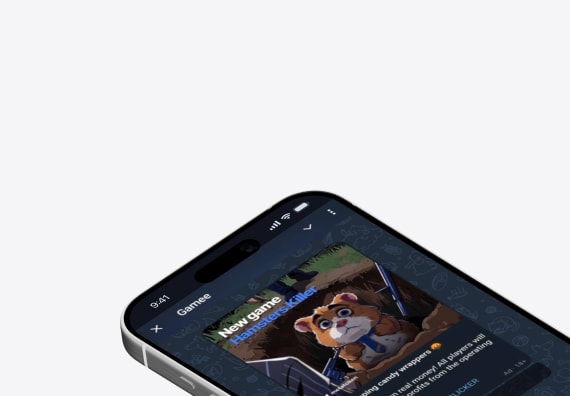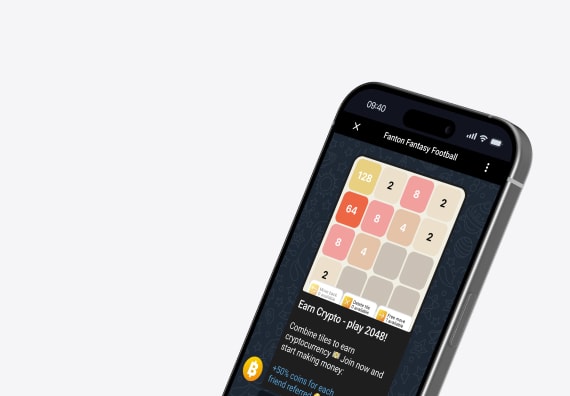Introduction
Traditional games are awesome, sure, but Web3 games? They’re like the wild west of gaming—untapped, exciting, and full of opportunities. Picture this: you’ve spent hours grinding for a rare sword, and instead of it being stuck in one game, you actually own it as a non-fungible asset. You can trade it, sell it, or even use it in another game. That’s the power of Web3 gaming—freedom, player-driven economies, and even making money while having fun.
Building games in the Web3 space isn’t as scary as it sounds. With some creativity, basic blockchain technology knowledge, and a clear plan, you can build a web3 game that stands out. Let’s break it down step-by-step and turn your idea into reality in the exciting world of web3.
Section 1: Understanding the Fundamentals of Web3 Gaming
Web3 is the next big thing, and blockchain gaming is riding that wave in style. This represents a new paradigm in gaming that has fundamentally changed how we approach interactive entertainment. At its core, web3 game development is about putting power back into players’ hands. Understanding popular web3 concepts is crucial before you get started with web3 game development. Blockchain technology has revolutionized the gaming industry by introducing new paradigms that differ significantly from web2 games. Here’s what makes it tick:
Smart Contracts: These are like the game’s autopilot. They enforce rules, manage transactions, and make sure everything runs smoothly without human interference.
Unique Digital Tokens: These are your game’s treasures—unique items that represent in-game items, characters, or even land in your game. Players can buy, sell, or trade them however they like.
DeFi Features: Want players to earn cryptocurrency while they’re not even playing? Add staking or lending options.
Community Governance: Instead of decisions coming from a studio, players can vote on updates or new features using DAOs (Decentralized Autonomous Organizations).
What sets Web3 gaming apart is how it makes every action count. Unlike traditional games, Web3 gives players true ownership of their in-game assets. Whether it’s through Play-to-Earn (P2E), where players earn cryptocurrency as they play, or Play-and-Own, which focuses on long-term ownership, Web3 games allow players real stakes in the game and transforms the overall gaming experience.
Section 2: Key Steps to Create a Web3 Game
- Conceptualize the Game Idea
Every legendary blockchain game starts with a big idea. Game creators should carefully consider their approach when entering the world of web3 games:
Game Mechanics: What does blockchain bring to your game? Maybe it’s a world where players own land as NFTs, or an economy where every transaction matters.
Know Your Audience: Are you targeting hardcore gamers, crypto enthusiasts, or curious newcomers? Your audience will guide everything from design to marketing.
Stand Out: Ask yourself, why would someone choose your game? A killer story? Addictive gameplay? A groundbreaking reward system? Find your hook. Remember, a good game is always the foundation, and thoughtful game design is essential.
“A great game isn’t about the tech—it’s about creating unforgettable moments for players.”
- Choose the Right Blockchain Platform
Picking a blockchain for your game is like choosing the right console—it’s a big deal. When selecting from various blockchains for web3 games, consider this comparison:
|
Blockchain |
Pros |
Cons |
Technical Details |
|
Ethereum |
Large community, secure, immutable |
High gas fees |
Supports Solidity; extensive developer tools and dApps support. |
|
Polygon |
Low fees, fast transactions, Immutable zkEVM support |
Smaller ecosystem |
Compatible with Ethereum; great for scaling via Layer 2. |
|
Solana |
Lightning-fast, low cost |
Early-stage bugs |
Uses Rust; high throughput but faces centralization concerns. |
|
Binance Smart Chain |
Affordable, accessible |
Centralized vibes |
Compatible with Ethereum; optimized for cost efficiency. |
Low fees are a must if your game has frequent transactions, but stability is king for complex ecosystems. Ensure your web3 game is compatible with your chosen platform.
- Set Up Smart Contracts for Game Logic
Smart contracts are your game’s engine. They’re the ones enforcing rules, minting assets, and handling transactions. Smart contract development requires careful planning:
- Use Solidity as a development framework for Ethereum or Rust (Solana) to code your contracts.
- Prioritize security with thorough testing and professional audits. One bug can tank your whole economy.
- Keep contracts lean to minimize costs and maximize efficiency.
- Create and Integrate Items for In-Game Use
Blockchain items are the heart of Web3 gaming. To create them:
Design Your Assets: Make your characters, weapons, or environments visually stunning and gameplay-relevant in-game assets.
Mint Assets: Use platforms like OpenSea or write custom contracts to create items, including unique NFT collectibles.
Gameplay Integration: Make sure items add real value—whether that’s rare abilities, exclusive perks, or cosmetic upgrades.
- Build the Game and Front-End Interface
Game developers often use development tools like Unity or Unreal Engine, which are perfect for creating stunning visuals and mechanics. Developing web3 games requires different considerations compared to traditional game development. The development process must consider blockchain integration from the start. For blockchain integration, use web3.js or ethers.js along with specialized SDKs and the best web3 gaming tools. Choose a reliable web3 development platform to ensure your game environment runs smoothly. Modern tools empower developers to create sophisticated experiences. Make sure your user experience is seamless—no one wants to fight clunky menus just to play. With the right approach, you can build web3 games that provide a seamless transition between traditional gaming and blockchain features, delivering an enhanced gaming experience for players and superior gameplay experience.
- Implement Wallet Integration for Players
Crypto wallets (like MetaMask or WalletConnect) are essential for Web3 games. Players will use them to:
- Store and trade assets.
- Make in-game purchases.
- Participate in governance votes.
Make onboarding simple. A frustrating wallet setup can scare players off.
Section 3: Tokenomics: Building a Sustainable Economy
Economic design is the glue that holds your game’s economy together. Here’s what you need to build for a sustainable economy:
Define Your Currencies:
- Utility Coins: For in-game transactions, upgrades, or crafting.
- Governance Assets: Let players vote on updates and big decisions.
- Reward Currency: Earned through gameplay, staking, or special achievements.
Plan Supply:
- Fixed Supply: Creates scarcity and drives long-term value.
- Dynamic Supply: Adapts as your game evolves.
Design Economic Loops: In-game currencies should flow—players earn them, spend them, and reinvest them in the game. Examples:
- Upgrade gear or unlock new levels.
- Participate in tournaments with entry fees.
- Stake currency for rare rewards.
Control Inflation:
- Use burning mechanisms to remove currency from circulation.
- Introduce asset sinks to balance the economy (e.g., crafting costs or marketplace fees).
“Good economic design is about creating a system players want to stay in—not just earn and leave.”
Section 4: Testing and Launching Your Web3 Game
Don’t just wing it—test everything before you deploy:
Testnets: Simulate transactions and gameplay without risking real funds.
Beta Testing: Get feedback from real players to fine-tune the experience.
Audits: Professional audits ensure your smart contracts are rock-solid.
When you’re ready to launch, go big: partner with influencers, run giveaways featuring exclusive NFTs, and engage your community to create buzz in the gaming industry.
Section 5: Growing and Monetizing Your Web3 Game
Engage Your Community:
- Build an active Discord or Telegram group where every developer can share insights and updates.
- Reward feedback and participation with exclusive perks.
Monetize Smartly:
- Sell limited-edition collectibles featuring unique digital assets.
- Create a marketplace for player-to-player trades.
- Offer premium subscriptions for unique features.
Keep It Fresh:
- Regular updates and events keep players engaged.
- Allow players to vote on major updates or features.
Section 6: Challenges and Best Practices
Challenges:
- Scalability issues on popular blockchains.
- Educating non-crypto-savvy players.
- Handling price volatility.
Best Practices:
- Use Layer 2 solutions for scalability and robust web3 infrastructure.
- Create simple tutorials to onboard new players.
- Design economics to withstand market fluctuations.
- Engage with the broader web3 ecosystem for partnerships and collaboration.
- Connect with experienced developer communities for guidance and support.
- Consider building web3 apps alongside your main game for additional utility.
Conclusion
Creating a successful web3 game isn’t easy, but it’s one of the most exciting challenges you can take on. With web3 development expertise, strong economic design, and an engaged community, you can build something groundbreaking. Every ambitious developer should consider exploring this space to fully realize the potential of web3. The best web3 games combine innovative gameplay with blockchain technology to create unique experiences. When you create games in this space, you’re not just building entertainment—you’re crafting the future of interactive experiences. The future of gaming is decentralized, and it’s waiting for you to make your mark. Ready to start building? Let’s go!


